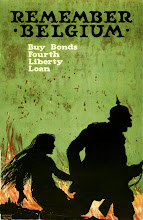If you want a happy blog, go find TheDove, ThePidgeon or perhaps TheCanary, although anyone adopting a
nom de plume of "
TheCanary" likely has a few things to say about climate change that aren't terribly happy. This blog belongs to TheRaven. I deal in analysis, insight and commentary. If happy happens, it's likely by chance.
You've read a certain famous poem written by an impoverished 19th drunkard? I was
there when he wrote it! Sadly for TheRaven, my contribution was overlooked in a recent
NewYorker piece. You'd think that a prize-winning, Harvard historian like Jill Lepore would detect my subtle influence. I gave Poe that whole
Lenore shtick. 'Ole weak and weary was rhyming "
Sally" with "
forgotten lore". I said "
put down the crack pipe" and all Poe heard was "
quoth the Raven".
One hundred and seventy-five years later, TheRaven shall brighten up your day,
nevermore.
**********************************************
We turn to crime - in your city. All data was obtained directly from the Federal Bureau of Investigation. The FBI collects city and county crime statistics under the Uniform Crime Reporting Program and publishes data annually, in September. Be sure to check back for crime insights in 3-4 months, after the 2010 data is available and TheRaven has updated the Crime in Your City reporting tool. This post addresses city crime.
Because the Uniform Crime Reporting Program is voluntary, FBI data represents localities that contain two-thirds of U.S. population. Each annual data set covers three years. Analyses presented here are based on data released in 2009, which covers 2006-2008. The FBI reports numbers of violent crimes, property crimes, uniformed officer staffing and incorporated city population. Data is grouped according to the FBI city classification, which is based on population. "Cities" defined in FBI data are not metro areas but incorporated places. The Census Bureau defines metro areas is a "
metropolitan statistical areas", which typically include many incorporated places.
Ten reports are presented in this post. There are only two sets report content. Reports are sorted several ways to highlight changes in police staffing, officer caseload and per-capita crime between 2006 and 2008. Sort keys are indicated by column heading background color. Parameters used to select data from the FBI's 9,400 city/town database appear under report titles. Each report covers a constant selection of 50 cities. National totals and averages appear across the bottom of each report.
If your city doesn't appear, this means that: (1) your city suffers a deficit of crime; (2) your city suffers a deficit of people; (3) your police department suffers a deficit of crime reporting to the FBI. We're focusing on the 50 largest cities in the database that experienced at least two reported violent crimes and at least 18 reported property crimes, per uniformed officer, per year. The FBI data only includes crimes
reported to local police.
Very important - caseload figures presented here represent average new cases, per officer, per year,
not overall case backlog. The FBI town/city database does not contain backlog or clearance data. The FBI separately reports case clearance data aggregated by city classification. A subsequent post may share this data (but you really won't want to read it).
Report content remains constant in presentations 1-6. A second data-set is provided in presentations 7-10. Presentations 1-6 are oriented around resources available to deal with reported crime. Presentations 7-10 look at crime incidence across city populations.
***************************************************
UPDATE: You can access and use the Crime in Your City tool by downloading it from Docstoc,
here. You need zero Excel skills. The tool is 100% point 'n click. It can be used
only with Excel2007 or Excel2010. There's also a "Crime in Your City" PDF document which provides a 14-page illustrated walkthrough of the tool,
download it here.
***************************************************
1. Police staffing, 2008 - the size of police departments is made comparable by converting uniformed officer staffing figures to per-capita values, i.e., the number of officers per 1,000 inhabitants. The national average is 2.29 officers/1,000 people. The 50 city average reported here is 2.08, roughly 10% under-average. Santa Ana, Ca. is at the low-end with 1.07 officers/1000 while St. Louis has the highest ratio, with 3.94 officers/1000. Eighteen cities are staffed above the 50-city average.
Click image to see full-size
Why is Nashville highlighted in all reports? The tool used to convert FBI data to reportable information (built using Excel2007) produces another report; a single-city crime crime trend analysis. The city selected for trend analysis is automatically highlighted in the Crime Screen report presented here. Nashville happened to be the selected city.
2. Police staffing variance, 2006-2008 - this metric combines two variables in one handy number to indicate relative direction of police staffing. It's based on both city population and the number of uniformed officers. Twenty-five cities increased police staffing between 2006 and 2008 while 25 saw reductions. Changes in staffing levels ranged from a (12%) drop in Toledo to a +10.7% increase in Phoenix. It's important to note that changes in city population can have the greatest impact the police staffing metric.
Click image to see full-size
Why do population numbers "look low"? Because population figures represent inhabitants only within city limits, not the larger metro areas.
3. Violent crime caseload, 2008 - FBI data doesn't identify how many officers are assigned to solving reported violent crimes. The caseload figures presented here are derived by dividing violent crime figures by police staffing. Caseload figures are broadly comparable across all cities. Average violent crime caseload in our 50 selected cities (4.5/year) is slightly more than twice the average in all other localities (2.2/year). Mobile, Al. is the lowest of the selected group with 2.4/year while Stockton, Ca. had 10.5/year. Twenty cities had violent crime caseloads in 2008 that exceeded 2x the national average.
Click image to see full-size
4. Violent crime caseload variance, 2006-2008 - this metric is a rough gauge of changes in police workload, relative to reported violent crime. Between 2006 and 2008, Indianapolis and Bakersfield both saw violent crime increase by at least one reported crime per officer. Nine cities had greater than 10% increases in caseload while 14 cities had at least a 10% decline.
Click image to see full-size
5. Property crime caseload 2008 - same logic that was applied to calculate violent crime caseload (#3, above) is repeated here for property crime. Selected cities average 25.5 reported property crimes per uniformed officer in 2008, compared with 16.4 in all other localities. Detroit was at the low-end with 17.5 while Bakersfield had 46.0. Twenty-five cities exceeded the 50-city average, six of which were at least 2x the national average.
Click image to see full-size
Why aren't these reports more in-depth? Because analysis is limited by available data. There are no technical limitations to refining the analysis to, for example, develop caseload metrics based only of the number of officers assigned to solving violent crimes, or, to study active case backlogs and clearance rates. The limitation is that necessary data is not made available to the public.
6. Property crime caseload variance, 2006-2008 - same logic applied to calculate violent crime caseload variance (#4, above) is applied here to reported property crime. Four-fifths of the selected 50 cities saw a reduction in reported property crime per uniformed officer, between 2006 and 2008. Property crime caseload dropped at least 2x the average of other localities in 17 of the 50 cities.
Click image to see full-size
Report content now changes to look at overall prevalence of crime, beginning with the next presentation.
7. Per-capita violent crime, 2008 - this metric divides city population by reported violent crime to derive the number of violent crimes reported for every 1,000 residents. Per-capita crime is a metric of crime prevalence. St. Louis tops the 50-city list with 20.75 violent crimes per 1,000 residents (which equals to a 2.1% chance individual victimization, per year). Chandler, Az. is at bottom, with 3.17 violent crimes per 1,000 residents. These metrics show that someone living within the St. Louis city limits is 6.5x more likely to be a victim of violent crime, as compared to a resident of Chandler, Arizona. Violent crime is more than twice as prevalent in the 50 cities versus other localities, with 9.45 crimes/1,000 vs. 4.94 in other localities. The prevalence of violent crime was more than 2x the national average in 16 of the 50 cities.
Click image to see full-size
8. Per-capita violent crime variance, 2006-2008 - this metric identifies rising or falling levels of violent crime. Because it combines the number of reported violent crimes and city population, it can be used to compare cities with different levels of population and violent crime. Dallas led the 50-city group with a 25% reduction between 2006 and 2008. Indianapolis was at the other end, with a +25% increase. Twenty-two of the 50 cities beat the national average, which was a 5% reduction.
Click image to see full-size
9. Per-capita property crime, 2008 - this metric replicates logic explained in presentation #7 (above) to measure the relative prevalence of property crime. Reported property crime across the U.S. was 37.9 crimes / 1,000 people in 2006 and fell to 35.6/1000 in 2008, a 6.2% decline. Property crime in the 50 cities averaged 53 crimes/1,000 people in 2008 and all but seven cites exceeded the national average. St. Louis had 85.5 crimes/1,000 people in 2008. While this was a distinct improvement over 2006, it should be noted that St. Louis' 2006 property crime prevalence represented a 1-in-8 chance of victimization per year.
Click image to see full-size
10. Per-capita property crime variance, 2006-2008 - our final presentation replicates #8 (above) with a look at changes in the prevalence of property crime. Two-thirds of the 50 cities reduced reported property crime prevalence to a greater degree than the national average. San Antonio, Atlanta, Glendale and Jacksonville saw property crime increase more than 5%. San Antonio and Atlanta are in the top-5.

Click image to see full-size
What do the reports suggest?
1. Don't blame your police department - caseload figures are a rough gauge of resource allocation. Police departments dealing with several violent crimes and dozens of property crimes per year, per officer are working hard, with finite resources, to reduce overall crime. Keep in mind, all crime figures presented here represent only those crimes reported to the police and caseloads for officers assigned to specific types of crime are much higher than the general averages presented in this post.
2. Crime stats aren't perfectly comparable - one of the reasons why property crime is more prevalent in large cities is that there is simply a lot more property to steal. Municipal governments and police departments aren't the cause of greater concentrations of wealth and property in large cities. On the contrary, this is a factor to consider when allocating municipal resources.
3. Your municipal budget matters (a lot) - relative to crime caseloads, leverage concepts apply to police staffing. Nashville's police force numbered 1,230 uniformed officers in 2008, slightly less than 1,250 in 2007. Using Nashville to construct a theoretic example, if one-quarter of it's police force (257 officers) were assigned to investigating violent crimes, then each officer dealt with 33 new cases in 2008. If Nashville had increased it's police force by 100 officers at the beginning of 2008, and assigned these officers only to solving violent crime, an 8% increase in overall police staffing would have achieved a 28% reduction in caseload.
4. Above-average crime is a competitive disadvantage - cities compete in more than sports. The arena that matters most is economics. Competition between cities for business relocation and foreign investment is fierce. Investors consider many factors before picking a city for a new factory, distribution center, headquarters or even a branch office. They look infrastructure, workforce quality, average cost of airline tickets, etc. Crime is always on the list. This means that high levels of crime dis-incent new investment, business growth and limit creation of new jobs. Nobody likes taxes but if your city wants to raise taxes and channel the funds to crime reduction (with oversight in place to make sure this happens), you should support such action. Other aspects of municipal spending are certainly important but no city can grow and prosper under the burden of high crime.
Finally, all crime reduction programs are not created equal. Ryan Gabrielson and Paul Giblin of the East Valley Tribune won the 2009 Pulitzer Prize for local investigative reporting for their multi-article expose of Sheriff Joe Arpaio. The Pulitzer committee selected their work "For their adroit use of limited resources to reveal, in print and online, how a popular sheriff’s focus on immigration enforcement endangered investigation of violent crime and other aspects of public safety." Support your local police department with an eye on effectiveness and, above all, programs that encourage witness cooperation.
You can find the complete Reasonable Doubt series on the Pulitzer website.





















































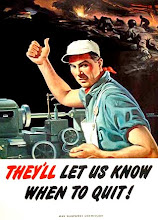
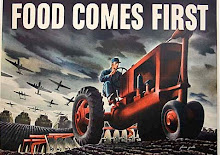
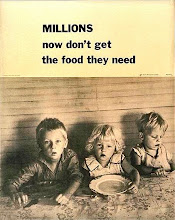



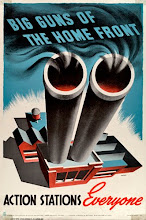
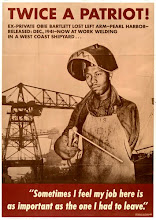
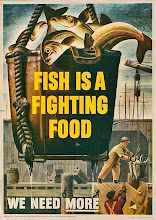
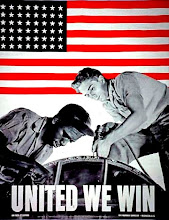


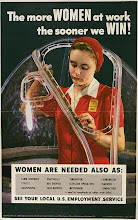

+breed+danger+6x8.jpg)


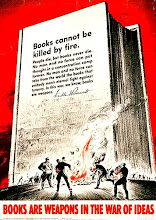
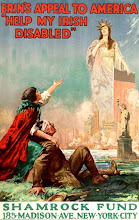


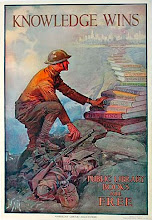

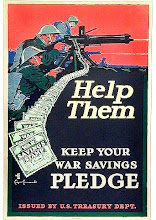
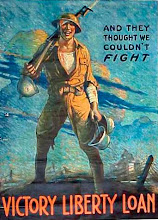

+5x7.jpg)
